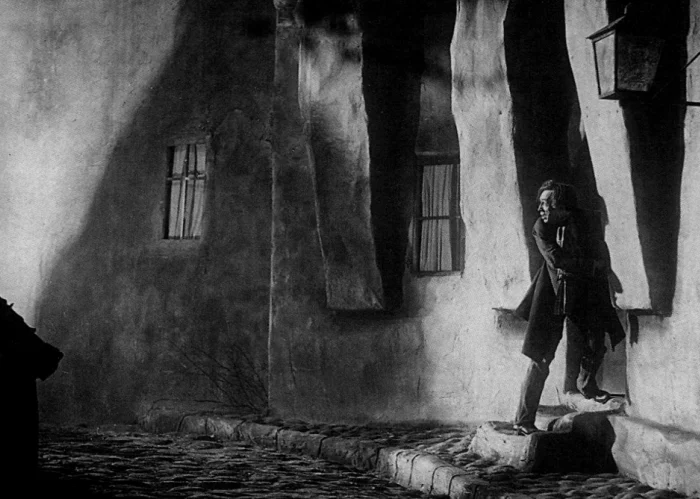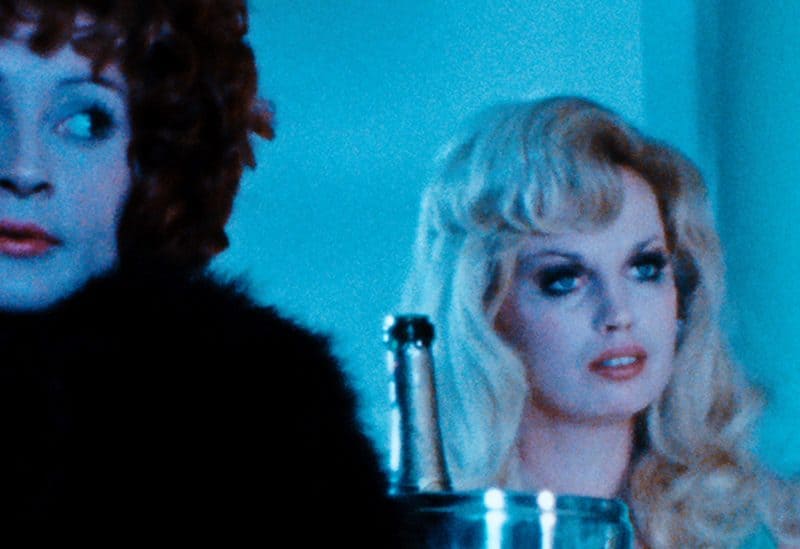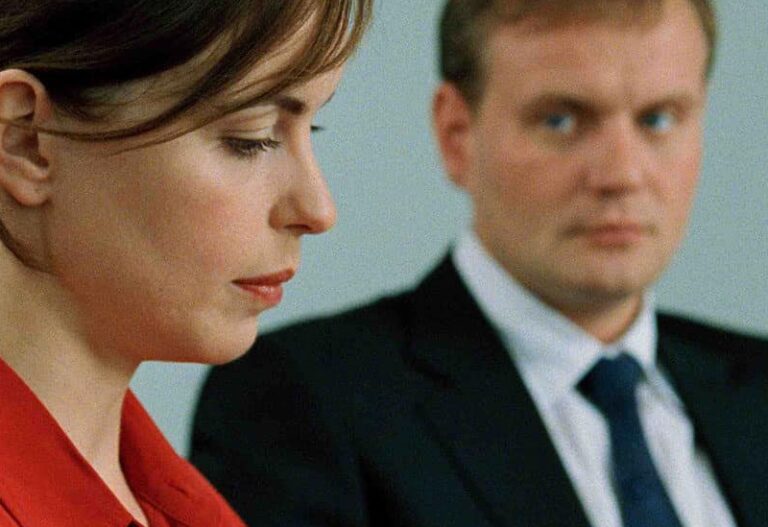german expressionism
est. 1913 – 1930
German Expressionism stands out as one of the most distinctive styles in the era of silent film. Expressionism, as an artistic movement, originally emerged in poetry and the visual arts during the early 20th century, before finding its way into various fields like theater, architecture, and notably cinema around the time of the First World War.
Origins of German Expressionism in Film
German Expressionism started as an artistic movement in painting, theater, architecture, and literature. Artists such as Ernst Ludwig Kirchner, Wassily Kandinsky, and Emil Nolde rejected naturalistic representation in favor of distorted forms, vivid colors, and exaggerated emotions. This movement provided a visual language that would deeply influence Expressionist filmmakers. Additionally, they drew inspiration from the rich tradition of German Romanticism and Gothic literature, with its emphasis on the supernatural, the macabre, and the irrational.
The movement was born in the aftermath of World War I and the Weimar Republic’s fragile democracy. Despite the dire economic situation in the post-World War period, the German filmmaking business flourished. This success was attributed to the industry’s outstanding technical prowess but was predominantly driven by a national ban on most foreign films instituted in 1916. This restriction forced German filmmakers to develop their own unique styles and narratives, leading to an explosion of creativity and innovation in the industry. Regardless of the cinematic boom of this period, it is undeniable that the German population was grappling with social, psychological, and economic challenges, to which Expressionist cinema emerged as a response.
The socio-political climate of the time, marked by instability and disillusionment, heavily influenced the themes and aesthetics of German Expressionist films. The horrors and traumas of the war, coupled with the uncertainty of the Weimar Republic era, were reflected in the stark, often grotesque imagery and themes of madness, betrayal, and existential dread. This era of film was not just an artistic endeavor but also a means for filmmakers to process and comment on the tumultuous reality around them.


German Expressionism Characteristics
At its core, German Expressionism sought to convey the inner turmoil, anxieties, and societal discord of the post-World War I era felt in Europe. Through distorted sets, dramatic lighting, and nightmarish landscapes, it offered a subjective representation of the world. The purpose of employing these stylistic elements was to evoke emotions while simultaneously narrating a tale or presenting a commentary on the societal backdrop of the period. This movement aimed to present a reality that was more emotional and psychological than literal.
One of the most significant contributions of German Expressionism to cinema was its study of the human psyche. These films frequently delved into the inner workings of characters’ minds, emphasizing the emotional turmoil and mental states of the protagonists. This psychological depth was groundbreaking and laid the foundation for future cinematic narratives. Characters in Expressionist films often found themselves in surreal and oppressive environments, mirroring their internal struggles, and blurring the lines between reality and hallucination.
The visual style of German Expressionist films is among its most defining features. The use of chiaroscuro lighting – the stark interplay of light and darkness, created a haunting and otherworldly atmosphere. This technique heightened the emotional impact of the scenes, adding a sense of mystery and unease. German film critic Lotte Eisner favored the term “Helldunkel,” which she defined as “a kind of twilight of the German soul, manifesting itself in shadowy and enigmatic interiors or misty and ethereal landscapes.”
The movement’s unique approach to set design and architecture played a crucial role in creating its distinctive aesthetic. Sets were constructed in a manner that defied naturalistic representation, featuring jagged lines, twisted shapes, and an overall sense of instability. These elements were used to symbolize the fractured state of the world and the characters’ psyches. The use of painted shadows and stark contrasts further enhanced the surreal and nightmarish quality of these environments, making them integral to the storytelling process. German Expressionist films also employed innovative camera techniques and special effects to enhance their storytelling. Techniques such as double exposure, miniatures, and creative use of camera angles allowed filmmakers to create visually stunning and thematically rich scenes.

Important Filmmakers and Films of the German Expressionism
German Expressionism was a collaborative endeavor, propelled by visionary directors, cinematographers, and designers. Among the most distinguished figures within this film movement was Robert Wiene, famous for now iconic film “The Cabinet of Dr. Caligari” (1920). The film epitomizes Expressionist cinema, distinguished by its surreal, distorted sets and with a narrative that delves into the darkest corners of imagination.
Fritz Lang, the genius behind many famous films, among them “Metropolis” (1927) and “M“ (1931), both regarding as masterpieces that represents visual and thematic highlights of the movement. Metropolis embarked on a exploration of the consequences of industrialization and the dehumanizing effects of technology on society. His visual style had a great impact on the development of science fiction and thriller genres.
Another notable and influential figure was F.W. Murnau. His early film “Nosferatu” (1922), is a seminal work in the horror genre, showcasing his mastery of atmospheric lighting, innovative camera techniques, and psychological depth. Murnau is regarded today as one of the greatest filmmakers of the silent era.
Legacy and Influence of German Expressionism
Influence of Expressionist films extended far beyond the borders of Germany. Many filmmakers who fled the political turmoil of Europe in the 1920s and 1930s, one of them being Fritz Lang, brought the aesthetic and storytelling techniques of Expressionist film with them to Hollywood. This migration of talent led to the creation of iconic films in American cinema, such as “Dracula” (1931) and “Frankenstein” (1931), which borrowed heavily from the German Expressionist tradition, as well as famous classics of the Golden Age of Hollywood such as “Citizen Kane” (1941), and the whole film noir genre.
German Expressionist film remains a pivotal movement in the history of film. Its haunting visuals, psychological depth, and willingness to explore the darkest aspects of the human condition continue to captivate and inspire filmmakers and audiences alike. The movement’s impact on Hollywood and world cinema is immeasurable, and its legacy lives on in countless iconic and cult films that owe their existence to the artistry of German Expressionism.

Refer to the Listed Films for the recommended works associated with the movement. Also, check out the rest of the Film Movements on our website.
New German Cinema or Neuer Deutscher Film, is a film movement that started in the late 1960s, and thrived throughout the 1970s and 1980s. It represents a significant…
In the early 20th century, a cinematic revolution was brewing in the Soviet Union. A group of visionary filmmakers, collectively known as the Soviet Montage School, gathered…
The Berlin School Movement of the 2000s can be seen as an evolution of the broader landscape of German cinema, with its roots tracing back to the 1990s. The movement…
Arthouse film refers to a category of cinema known for its artistic and experimental nature, usually produced outside the major film studio system. These films prioritize artistic…
Film noir emerged in the early 1940s as a distinctive style within American cinema, marked by its dark, moody aesthetics and cynical narratives. The term “film noir”…
In this classic thriller, Hans Beckert, a serial killer who preys on children, becomes the focus of a massive Berlin police manhunt. Beckert’s heinous crimes are so repellant…






